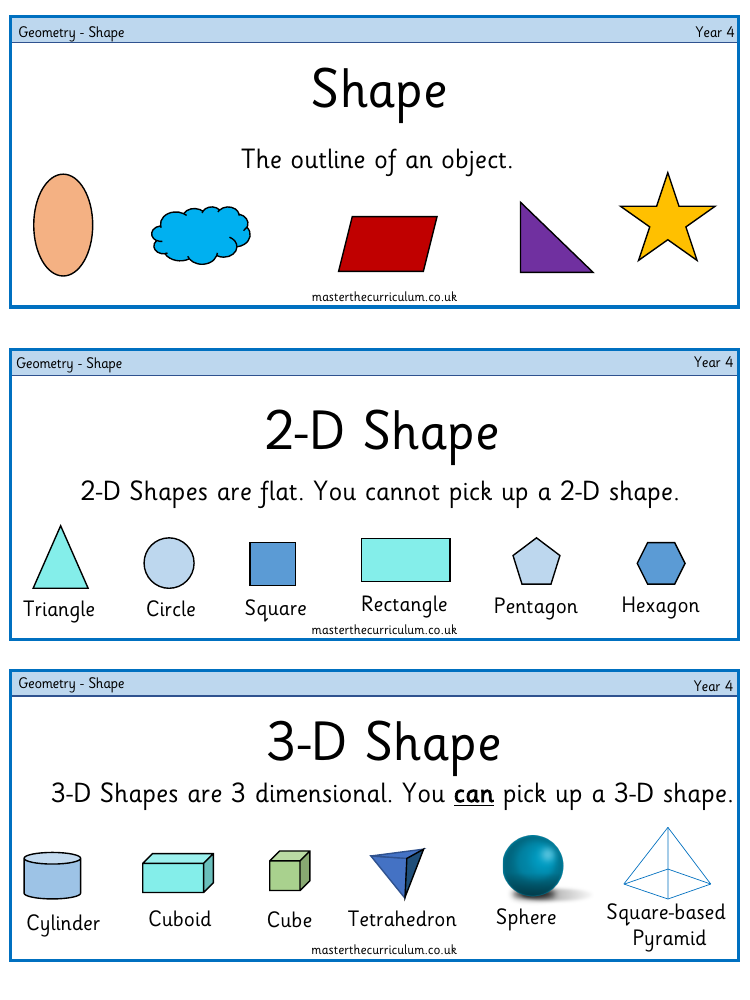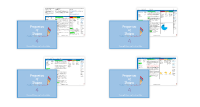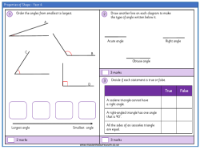Properties of Shape - Vocabulary

Maths Resource Description
The Year 4 Geometry - Shape curriculum introduces students to the fundamental concepts of shapes and their properties. Starting with the basics, it distinguishes between 2-D shapes, which are flat and cannot be picked up, and 3-D shapes, which are three-dimensional and can be handled. Examples of 2-D shapes include triangles, circles, squares, rectangles, pentagons, and hexagons. In contrast, 3-D shapes such as cylinders, cuboids, cubes, tetrahedrons, spheres, and square-based pyramids are explored for their ability to occupy space. The outline of any object is referred to as its shape, and the lines that form a 2-D shape are called sides. The term 'vertex' (or 'vertices' for plural) is used to describe the point where edges meet in both 2-D and 3-D shapes, while a 'corner' specifically refers to where sides meet in 2-D shapes.
Understanding symmetry is an important part of the curriculum, with symmetrical shapes being those that can be folded in half to show two identical halves, and non-symmetrical shapes lacking this property. Students learn about the vertical line of symmetry, which divides a shape into equal parts. In 3-D shapes, 'faces' are the flat surfaces, and 'edges' are where two faces meet. The curriculum also covers concepts such as classifying and sorting shapes based on their properties, recognizing patterns, and identifying different types of triangles (isosceles, scalene, and equilateral). Additionally, students study angles, including acute, right, and obtuse angles, and how they are formed when two straight lines meet. They learn about turns (quarter, half, three-quarter, and full turns) and orientations (clockwise and anti-clockwise), as well as horizontal, vertical, and perpendicular lines, all of which are crucial for a comprehensive understanding of geometry.


